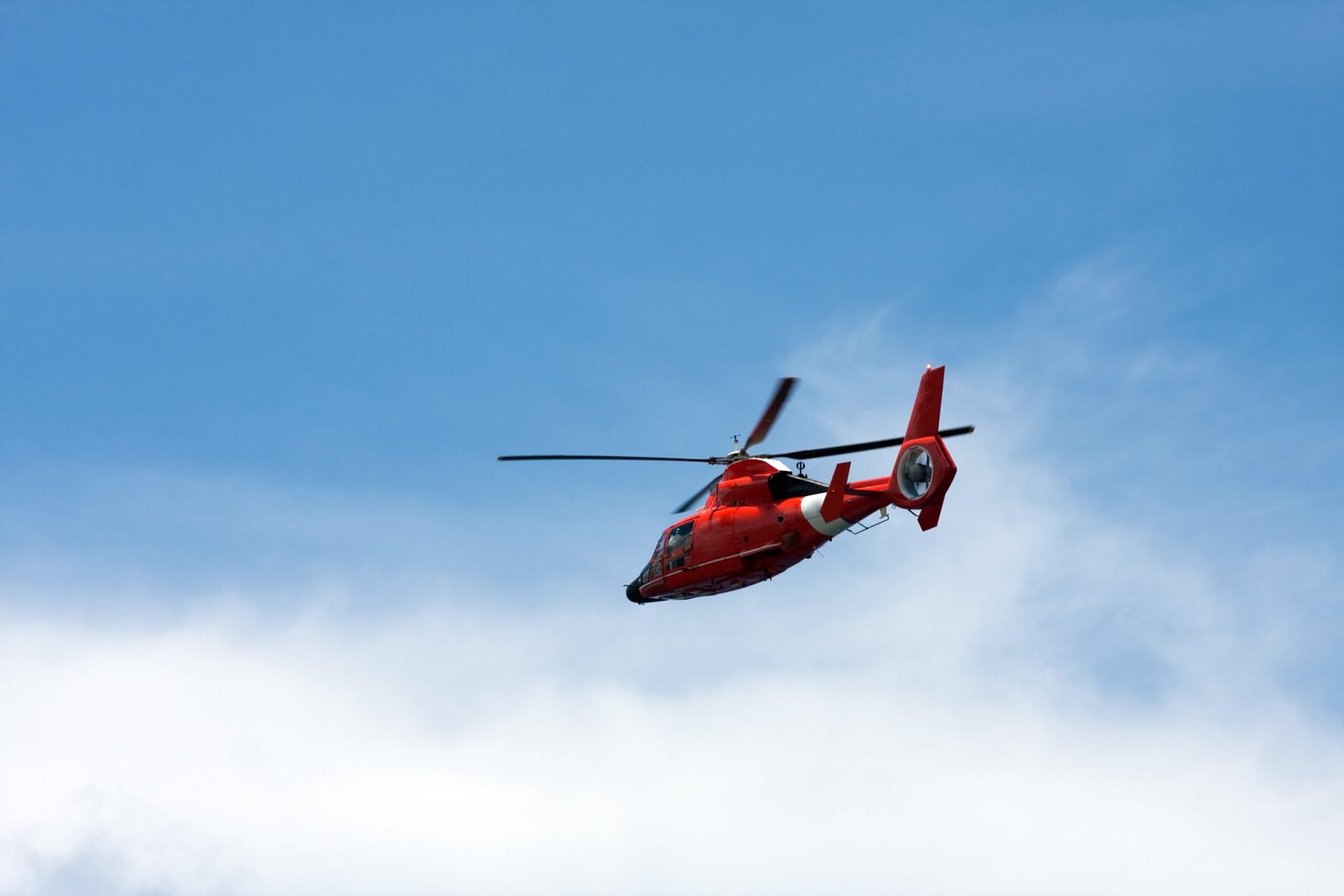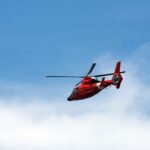Aviation Social Media
High-Flying Careers: Navigating Your Path in the Aviation Industry
The aviation industry, with its boundless opportunities and exhilarating prospects, is a realm where dreams take flight. For those yearning to soar through the skies, understanding the educational pathways and resources available is crucial. This post will guide you through various types of aviation schools, essential blogs and websites for insights, as well as information on FAA-approved flight training programs.
### Types of Aviation Courses
When it comes to pursuing a career in aviation, a myriad of specialized courses awaits aspiring aviators. Here’s a breakdown of some common types:
1. **Pilot Training Programs**: These are tailored for those aiming to become professional pilots. They encompass private pilot licenses (PPL), instrument ratings (IR), commercial pilot licenses (CPL), and airline transport pilot licenses (ATPL). Many schools offer comprehensive packages that combine ground school with in-flight training.
2. **Aviation Management Degrees**: For individuals interested in the business side of flying, aviation management programs provide critical knowledge about airport operations, air traffic control systems, and airline management practices. These degrees often blend practical experiences with theoretical frameworks.
3. **Aircraft Maintenance Programs**: These courses train students in maintaining and repairing aircraft systems and structures. Graduates usually pursue certification from the Federal Aviation Administration (FAA) to work as certified maintenance technicians.
4. **Aerospace Engineering**: For those fascinated by the design and development aspects of aircraft, aerospace engineering offers an advanced understanding of aerodynamics, propulsion systems, materials science, and structural integrity.
5. **Flight Attendant Training**: This program equips future cabin crew members with essential skills such as safety protocols, customer service techniques, and emergency response procedures—crucial for ensuring passenger comfort during flights.

6. **Simulated Flight Training**: Many training institutions now incorporate advanced simulators into their curriculum. These provide realistic environments where students can practice maneuvers without leaving the ground.
### Valuable Resources for Aspiring Aviators
To stay updated with industry trends or seek guidance during your journey into aviation, numerous blogs and websites serve as invaluable resources:
**Airline Pilot Central**: A hub for pilots featuring forums discussing airlines hiring pilots and recent job postings.
**Flying Magazine**: A long-standing publication covering everything from flying tips to gear reviews.
**Plane & Pilot Magazine**: Focuses on pilot stories along with gear recommendations.
**The Points Guy**: Great for travelers wanting insights into maximizing travel rewards related to flights.
Social media platforms also have thriving communities devoted to aviation:
Join Facebook groups like “Aspiring Pilots” or “Aviation Enthusiasts.”
Follow Twitter accounts such as @AeroNews or @PilotNetwork to get real-time updates.
LinkedIn can be useful too! Connecting with professionals in the field can open up networking opportunities that may lead to internships or job placements down the line.
### FAA Flight Schools & Simulators
If you’re ready to embark on your flight training journey, look no further than FAA-approved flight schools across the country. These institutions adhere strictly to federal safety regulations while providing high-quality education aimed at producing proficient pilots.
Flight schools typically offer a combination of classroom instruction alongside practical experience using sophisticated flight simulators—replicating real-world flying conditions without stepping outside! Popular simulator brands like Redbird or Frasca are commonly found in many training centers.

In conclusion, whether you’re eyeing a cockpit seat or an office managing air traffic logistics, embarking on an aviation career requires thorough research into educational pathways along with consistent engagement within industry networks. The sky’s not just the limit; it’s your new beginning!
From Biplanes to Drones: The Evolution of Aviation Technology
The realm of aviation has undergone a breathtaking transformation since the days when biplanes ruled the skies. As we soar into a new age defined by precision, efficiency, and innovation, it’s fascinating to explore how aviation technology has evolved and what it means for future generations. This journey isn’t just about the machines; it’s also about the education that shapes future aviators and enthusiasts.
### Aviation Schools: A Diverse Learning Landscape
Today’s aviation schools offer an impressive array of courses tailored to meet diverse interests within the field. Whether you’re dreaming of becoming a pilot, air traffic controller, or aerospace engineer, there’s a specialized program waiting for you.
1. **Pilot Training Programs**: These courses cover everything from private pilot licensing to advanced certifications like instrument ratings or commercial licenses. Aspiring pilots can choose between in-person training at flight schools or online theoretical courses.
2. **Aeronautical Engineering**: This track focuses on designing and constructing aircraft, including studying aerodynamics, materials science, and propulsion systems. Universities with strong engineering programs often provide hands-on experience with simulations and lab work.
3. **Air Traffic Control (ATC)**: ATC programs prepare students for careers managing air traffic flow in increasingly busy skies. Courses typically include simulation training that mimics real-life scenarios.
4. **Aviation Management**: For those interested in the business side of aviation—such as airport management or airline operations—aviation management programs offer insights into logistics, finance, and regulatory compliance.
5. **Drone Technology Courses**: With drones revolutionizing industries from agriculture to delivery services, specialized courses are emerging that focus on unmanned aerial systems (UAS) operations, regulations, and application development.
### Dive Deeper with Online Resources
As you immerse yourself in aviation studies or simply seek to stay updated on trends and technologies shaping this dynamic field, several blogs and websites are pure gold:
**AirlineReporter.com**: Delve into airline news with a focus on travel experiences.
**FlyingMagazine.com**: A comprehensive source for articles on flight safety tips and aircraft reviews.
**TheAirCurrent.com**: An insightful blog covering aviation business issues and market analysis.
**AviationWeek.com**: Offers industry professionals critical news regarding aerospace technologies.
Social media platforms also play an essential role in connecting enthusiasts:
Follow #AvGeek on Twitter for tweets from fellow aviation lovers.
Join Facebook groups dedicated to specific aircraft types or flying communities.
Check out Instagram accounts showcasing stunning aerial photography—#DronesDaily is particularly popular among drone aficionados.
### Flight Schools & Simulators
When it comes down to practical training experiences, FAA-certified flight schools pave the way for aspiring pilots across the United States. These institutions adhere strictly to Federal Aviation Administration (FAA) guidelines ensuring quality instruction:
1. **Local Flight Schools**: Often affiliated with regional airports, these schools typically have fleets of small aircraft alongside experienced instructors ready to guide your first flights.
2. **University Programs**: Many colleges now offer Bachelor’s degrees in Aviation Science coupled with extensive flight training opportunities through their own FAA-approved flight schools.
3. **Simulator Training Centers**: Advanced simulators replicate cockpit environments providing invaluable practice without leaving the ground! Environments range from general aviation planes to complex commercial jets.
In conclusion, as we reflect on our journey from biplanes buzzing through open skies to sophisticated drones navigating urban landscapes autonomously, it’s evident that education will remain foundational in this ongoing evolution of aviation technology. For anyone eager to take part in shaping tomorrow’s skies—now is undeniably an exciting time!

Soaring High: The Future of Aviation Technology
Aviation is a field that continuously evolves, driven by advancements in technology and an insatiable quest for efficiency and safety. As we soar into the future, it’s essential to understand not only the innovative technologies shaping the industry but also the educational pathways fueling this transformation. Let’s explore the types of aviation schools available today, some must-visit blogs and websites, and delve into FAA flight schools that are paving the way for aspiring aviators.
*Types of Aviation Courses**
When it comes to aviation education, there are various types of courses designed to cater to different interests and career paths. Here’s a snapshot:
1. **Pilot Training Programs**: These are typically offered by flight schools where students learn everything from basic flying skills to advanced navigation techniques. Courses can range from private pilot licenses (PPL) to commercial pilot licenses (CPL) and beyond.

2. **Aircraft Maintenance Engineering**: For those inclined towards mechanics, these programs teach students how to maintain and repair aircraft systems, ensuring safety and compliance with regulations.
3. **Aerospace Engineering**: This course focuses on the design and development of aircrafts or spacecrafts. Students delve into subjects like aerodynamics, propulsion systems, and materials science.
4. **Air Traffic Control Training**: Vital for maintaining safe airspace management, these courses prepare students for roles as air traffic controllers through simulations and real-world training experiences.
5. **Flight Attendant Training**: Catering primarily to customer service in the skies, this program covers emergency procedures, safety protocols, and passenger relations.
Each type of course offers unique insights into specific aspects of aviation, providing a well-rounded educational experience tailored to individual career aspirations.
*Essential Aviation Blogs & Websites**
Staying updated with industry trends is crucial for anyone involved in aviation. Here are some noteworthy resources worth following:
**AirlineReporter.com**: This blog provides insights on airline news with a focus on passenger experiences.
**The Air Current**: A site dedicated to in-depth analysis concerning commercial aviation trends.
**Flying Magazine**: An authoritative source covering pilot training tips alongside reviews on aircraft.
**AvGeekery.com**: A fun blog filled with stories from enthusiasts about all things planes.
On social media platforms like Twitter or Instagram, you can follow accounts like @AviationWeek or @aircraftspotting for real-time updates on industry developments.
*FAA Flight Schools & Simulators**
The Federal Aviation Administration (FAA) regulates flight training across America ensuring high standards in quality education at various accredited flight schools. These institutions often utilize state-of-the-art simulators that provide students with realistic flying experiences without leaving the ground.
For those looking for reputable FAA-certified flight schools, consider reaching out to:
1. **Embry-Riddle Aeronautical University** – Known globally for its aerospace programs.
2. **ATP Flight School** – Focused on fast-track professional pilot training.
3. **California Aeronautical University** – Offers both online classes along with hands-on training opportunities.
Simulation technology has come leaps forward too; devices like full-motion simulators now allow learners to practice emergency scenarios or complex navigational tasks safely before taking control of actual aircraft.
In conclusion, as we look up toward an ever-evolving horizon in aviation technology—be it through innovative learning pathways or cutting-edge tools—it’s clear that tomorrow’s aviators will be better equipped than ever before! Whether your dream involves soaring through clouds as a pilot or maintaining sophisticated machinery as an engineer—there’s never been a better time than now to embark on your journey within this exhilarating field!
Flying Through History: Milestones That Changed Aviation Forever
Aviation has always been an exhilarating journey, one that intertwines human ingenuity and relentless ambition. As we soar through the annals of history, it’s essential to recognize how education and information dissemination have played pivotal roles in shaping the aviation landscape. From specialized schools to vibrant online communities, let’s explore how these milestones continue to influence future aviators.
*Aviation Schools: Types of Courses**
The pathway to becoming a skilled aviator is paved with diverse educational opportunities. Aviation schools offer a variety of courses tailored to different facets of the industry. At the heart of these programs are traditional flight training schools, where students can earn private pilot licenses (PPL) or commercial pilot licenses (CPL). Beyond flying skills, many institutions provide ground school classes that cover vital topics like navigation, meteorology, and aircraft systems.
For those interested in the technical side, maintenance and engineering courses are available at numerous vocational colleges. These programs delve into aircraft design principles, airframe mechanics, and powerplant operations—essential knowledge for ensuring safety in the skies.
Additionally, aspiring pilots may choose programs focused on aviation management or business administration. These courses prepare individuals for leadership roles within airlines or airport operations. The blend of practical skills with theoretical knowledge creates well-rounded professionals capable of navigating this complex field.
*A List of Essential Aviation Blogs and Websites**
In our digital age, staying informed is as important as formal education. A plethora of blogs and websites dedicated to aviation can help enthusiasts and professionals alike keep abreast of industry trends and innovations. Here are some must-visit resources:

1. **Airliners.net** – A hub for aviation enthusiasts featuring stunning photography alongside discussions on various aircraft.
2. **Flying Magazine** – This publication offers insights into piloting techniques while also sharing personal stories from seasoned aviators.
3. **AvWeb** – An online source providing news updates on everything from technology advancements to regulatory changes affecting pilots.
4. **Pilot’s Digest** – A collection of articles covering training tips, gear reviews, and stories from across the globe.
5. **FlightAware** – Excellent for tracking real-time flights; it’s invaluable for both hobbyists and professionals monitoring air traffic.
Social media platforms also serve as dynamic venues for discussion and learning. Following accounts such as @FallingSkyNews on Twitter or engaging with Facebook groups like “Aviation Enthusiasts” can enrich your understanding while connecting you with fellow aviation aficionados.

*FAA Flight Schools: Simulators and More**
The Federal Aviation Administration (FAA) plays a crucial role in establishing standards for flight schools across America. FAA-certified flight schools offer structured training programs that adhere to rigorous guidelines ensuring safety and efficacy in pilot education.
These institutions frequently incorporate advanced simulators into their curriculum—tools that replicate real-world flying scenarios without leaving the ground! These high-tech devices allow students to practice maneuvers under various conditions safely before taking control of an actual aircraft.
From fundamental concepts taught at local community colleges to specialized institutions focusing solely on aviation careers, there’s an abundance of choices awaiting future pilots eager to take off into their dreams.
As we reflect on these critical milestones in aviation education—from diverse course offerings at schools to thriving online communities—the evolution continues unabated! With each new generation equipped with knowledge gained from past experiences, who knows what heights humanity will reach next? The sky truly is not just a limit; it’s an invitation!
Soaring Skies: The Future of Sustainable Aviation Technology
Aviation, an industry synonymous with innovation and adventure, is on the brink of a remarkable transformation. As we hurtle toward a more sustainable future, the integration of cutting-edge technology will redefine how we think about flying. But before we dive into this thrilling era, let’s explore how aspiring aviators can prepare for these changes through various educational paths and resources.
*Aviation Schools by Types of Courses**
Diverse educational programs offer a multitude of courses that cater to every facet of aviation. At the forefront are flight training schools, which primarily focus on preparing students for piloting careers. These institutions provide hands-on flight experience complemented by ground school instruction covering navigation, meteorology, and regulations.

Then there are aviation management programs that equip future leaders with knowledge in finance, operations, and logistics within the aviation sector. For those interested in aircraft maintenance, airframe and powerplant (A&P) schools deliver specialized training to ensure safety and efficiency in aircraft operations.
Furthermore, universities often offer degree programs in aerospace engineering, focusing on designing and developing aircraft technologies. This sector is crucial for fostering innovations that enhance sustainability—such as electric propulsion systems or advanced aerodynamics.
*Lists of Aviation Blogs, Websites, Social Media Sites**
Staying informed is vital in an ever-evolving field like aviation. Fortunately, numerous blogs and websites provide insights into current trends and advancements. Noteworthy blogs include “Airliners.net,” where enthusiasts share photographs alongside discussions about airline operations worldwide. Similarly, “The Points Guy” offers travel tips while emphasizing sustainability initiatives within airlines.
For those who prefer concise updates through social media channels, Twitter has become a hub for aviation news; accounts like @FlightGlobal share real-time information on industry developments. Additionally, Instagram accounts such as @aviationdaily showcase stunning imagery from around the globe while highlighting eco-friendly practices adopted by various airlines.
YouTube also hosts a plethora of channels dedicated to aviation topics—like “Mentour Pilot,” wherein professional pilots discuss experiences while also addressing the importance of environmental stewardship in their profession.
*FAA Flight Schools/Airplane Schools/Simulators**
When it comes to official flight training in the United States, FAA-approved flight schools are pivotal. They adhere to strict regulations ensuring quality education for aspiring pilots. Some renowned institutions include Embry-Riddle Aeronautical University and ATP Flight School—both known for their comprehensive programs that combine practical flying experience with theoretical knowledge.
Additionally, simulation technology is revolutionizing pilot training methodologies. High-fidelity simulators allow students to practice complex maneuvers without leaving the ground—a critical aspect when considering emergency scenarios or learning new aircraft systems. Many modern flight schools incorporate simulation time as part of their curriculum to enhance overall proficiency while minimizing costs associated with actual flight hours.
In conclusion, as we look skyward towards sustainable aviation’s bright future filled with electric planes and eco-efficient technologies, it’s imperative that tomorrow’s pilots receive robust training through diverse educational avenues available today. With countless resources at their fingertips—from insightful blogs sharing industry wisdom to FAA-certified schools providing top-notch instruction—aspiring aviators are well-positioned to not just witness but actively participate in this exciting new chapter of aviation history! The sky may not be the limit after all; instead, it could be just the beginning!



